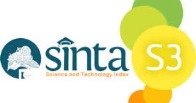The trend of Virtual Laboratory Apps: Ontology, Epistemology, and Axiology Perspectives to Support Contextualized Knowledge to Develop Learning Resource in Chemistry Education
(1) Universitas Negeri Surabaya
(2) Universitas Negeri Surabaya
(3) Universitas Negeri Surabaya
(*) Corresponding Author
Abstract
There were difficulties with the pandemic-related chemistry practicum learning. Therefore, a study of these issues is required. A virtual laboratory is one existing solution. This research seeks to identify the current Android VL trend. How does Android VL support chemistry education's scientific method? Do pupils now possess any new skills due to utilizing VL Android? This study is a case study. 237 Android Apps were found in the search results and categorized as Apps Virtual Laboratory (VL). The results of the selection produced 118 Apps. The study's findings indicate that chemical reactions are generally the focus of the VL, primarily created by the British state. It would be ideal to combine VL and lab practicum learning, as this would enable students to be better prepared for fieldwork in the real world and boost student self-efficacy and instructor teaching motivation.
Keywords
Full Text:
PDFReferences
Ali, N., & Ullah, S. (2020). Review to Analyze and Compare Virtual Chemistry Laboratories for Their Use in Education. Journal of Chemical Education, 97(10), 3563–3574. https://doi.org/10.1021/acs.jchemed.0c00185
Aliyu, F., & Talib, C. A. (2019). Virtual Chemistry Laboratory : A Panacea to Problems of Conducting Chemistry Practical at Science Secondary Schools in Nigeria. International Journal of Engineering and Advanced Technology (IJEAT), 8(5), 544–549. https://doi.org/10.35940/ijeat.E1079.0585C19
Bretz, S. L. (2019). Evidence for the Importance of Laboratory Courses. Journal of Chemical Education, 96, 193–195. https://doi.org/10.1021/acs.jchemed.8b00874
Chan, P., Gerven, T. Van, Dubois, J., & Bernaerts, K. (2021). Virtual chemical laboratories : A systematic literature review of research, technologies and instructional design. Computers and Education Open, 2, 100053. https://doi.org/10.1016/j.caeo.2021.100053
Crowe, S., Cresswell, K., Robertson, A., Huby, G., Avery, A., & Sheikh, A. (2011). The Case Study Approach. BMC Med Res Methodol, 11(100), 1471–2288. https://doi.org/10.1186/1471-2288-11-100
Dinevski, D., & Herga, N. R. (2012). Virtual Laboratory in Chemistry – Experimental Study of Understanding, Reproduction, and Application of Acquired Knowledge of Subject's s Chemical Content. Organizacija, 45. https://doi.org/10.2478/v10051-012-0011-7
Hamed, G., & Aljanazrah, A. (2020). The effectiveness of Using Virtual Experiments on Students’ Learning in The General Physics lab. Journal of Information Technology Education: Research, 19, 976–995. https://doi.org/https://doi.org/10.28945/4668
Heras, S. C. de las, Kensington-Miller, B., Young, B., Gonzalez, V., Krühne, U., Mansouri, S. S., & Baroutian, S. (2021). Benefits and Challenges of a Virtual Laboratory in Chemical and Biochemical Engineering: Students ’ Experiences in Fermentation. Journal of Chemical Education, 98, 866−875. https://doi.org/10.1021/acs.jchemed.0c01227
JONES, N. (2018). The virtual lab. Nature, 562, 8–10. https://doi.org/https://doi. org/10.1038/d41586-018-06831-1
Kelley, E. W. (2021). Sample Plan for Easy, Inexpensive, Safe, and Relevant Hands-On, At-Home Wet Organic Chemistry Laboratory Activities. Journal of Chemical Education, 98(1622–1635). https://doi.org/10.1021/acs.jchemed.0c01172
Kalil, V. K., Muthupalani, S., & Achuthan, K. (2020). Virtual experimental platforms in chemistry laboratory education and its impact on experimental self-efficacy. International Journal of
Educational Technology in Higher Education, 17(30), 1–22. https://doi.org/https://doi.org/10.1186/s41239-020-00204-3
Mistry, N., & Shahid, N. (2021). Design and Delivery of Virtual Inquiry-Based Organic Chemistry Experiments. Journal of Chemical Education, 98(9), 2952–2958. https://doi.org/10.1021/acs.jchemed.1c00571
Nais, M., Sugiyarto, K., & Ikhsan, J. (2019). Virtual chemistry laboratory ( virtual chem-lab ): potential experimental media in hybrid learning. Virtual chemistry laboratory ( virtual chem-lab ): potential experimental media in hybrid learning. In International Conference of Chemistry. IOP Conf. Series: Journal of Physics: https://doi.org/10.1088/1742-6596/1156/1/012028
Rahmadani, N. F., Retno, S., Ariani, D., Mulyani, S., & Yunita, N. (2020). Chemistry Teachers ’ Perspectives on Virtual STEM Laboratories as Learning Media. In 6th International Seminar on Science Education (Vol. 541, pp. 627–633).
Rahmawati, Y., Taylor, E., Taylor, P. C., Ridwan, A., & Mariah, A. (2022). Students ' Engagement in Education as Sustainability : Implementing an Ethical Dilemma-STEAM Teaching Model in Chemistry Learning. Sustainability, 14(3554), 1–15. https://doi.org/https://doi.org/10.3390/su14063554
Reid, N., & Shah, I. (2007). The role of laboratory work in university chemistry. Chemistry Education Research and Practice, 8(2), 172–185.
Serafin, J. M., & Chabra, J. (2020). Using a Cooperative Hands-On General Chemistry Laboratory Framework for a Virtual General Chemistry Laboratory. Journal of Chemical Education, 97(9), 3007–3010. https://doi.org/10.1021/acs.jchemed.0c00780
Thi Vu Hoai, T., & Thao, T. T. T. (2021). Medical Pharmaceutical Sciences Using Virtual Experiments in Lessons on Oxygen-Sulfur Chemistry 10 to Develop the Experimental Chemistry Competency for Students in Teaching. Medical Pharmaceutical Sciences, 1(2), 8–15.
Ullah, S., Ali, N., & Rahman, S. U. (2016). The Effect of Procedural Guidance on Students ’ Skill Enhancement in a Virtual Chemistry Laboratory. Journal of Chemical Education, 93(12), 2018–2025. https://doi.org/10.1021/acs.jchemed.5b00969
Warning, L. A., & Kobylianskii, K. (2021). A Choose-Your-Own-Adventure-Style Virtual Lab Activity. Journal of Chemical Education, 98, 924–929. https://doi.org/10.1021/acs.jchemed.0c01241
Winkelmann, K., Scott, M., & Wong, D. (2014). Experiment within the Virtual World of Second Life. Journal of Chemical Education, 91(9), 1432–1438. https://doi.org/https://doi.org/10.1021/ed500009e
Article Metrics
Abstract view : 458 timesPDF - 92 times
DOI: https://doi.org/10.26714/jps.10.2.2022.72-79
Refbacks
- There are currently no refbacks.
Copyright (c) 2022 JURNAL PENDIDIKAN SAINS UNIVERSITAS MUHAMMADIYAH SEMARANG

This work is licensed under a Creative Commons Attribution 4.0 International License.
EXECUTIVE OFFICE
JURNAL PENDIDIKAN SAINS UNIVERSITAS MUHAMMADIYAH SEMARANG
DEPARTMENT OF CHEMISTRY EDUCATION
FACULTY OF MATHEMATICS AND NATURAL SCIENCES
MUHAMMADIYAH SEMARANG UNIVERSITY
Jl. Kedungmundu Raya No.18, Semarang, Jawa Tengah, Indonesia
Telp. (024)76740231, 76740231
email: jps@unimus.ac.id

This work is licensed under a Creative Commons Attribution 4.0 International License
Journal Pendidikan Saisn (JPS)
ISSN:2339-0786, e-ISSN:2502-1443
Published by: Chemistry Education, Muhammadiyah Semarang University










